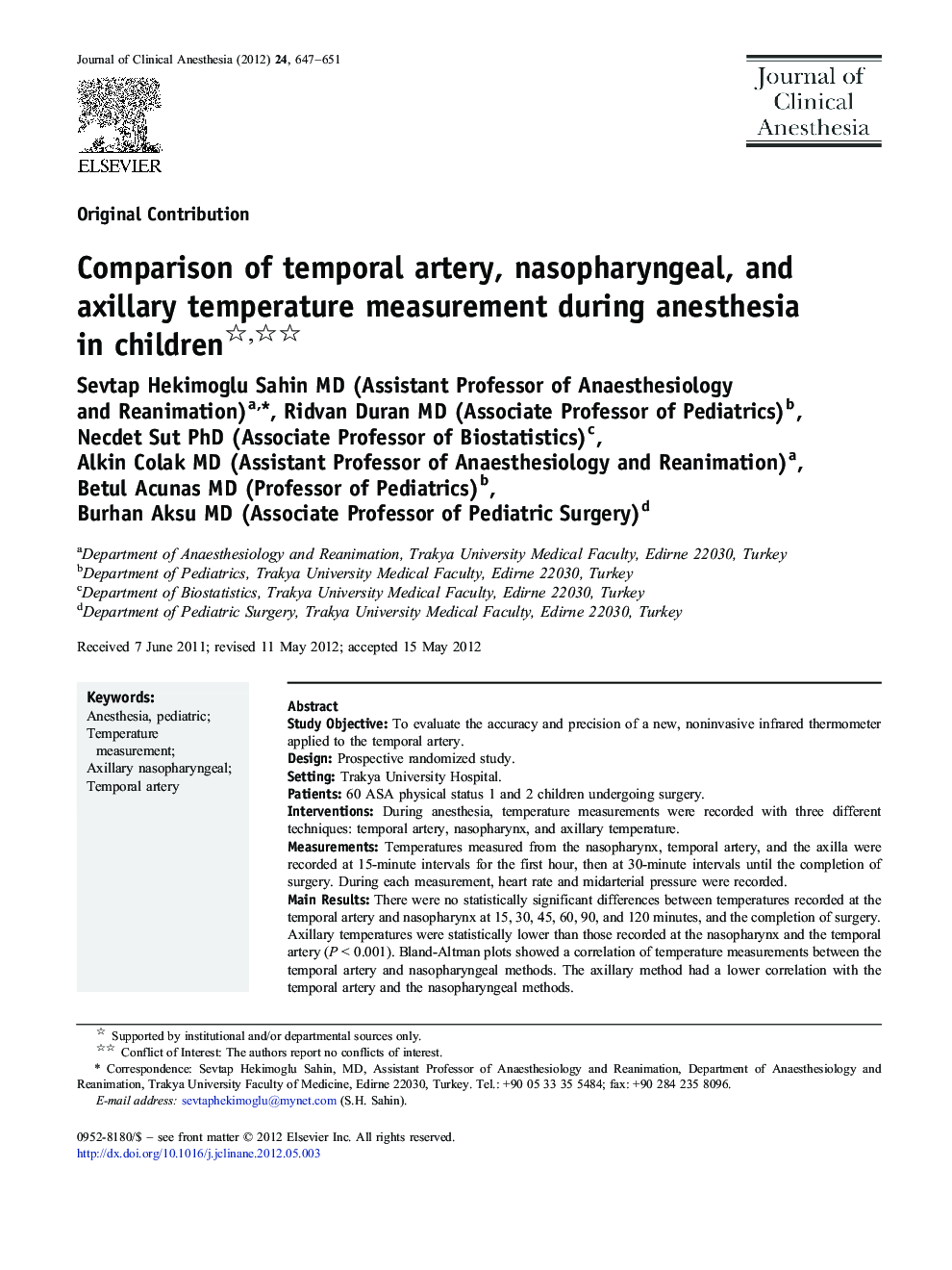| Article ID | Journal | Published Year | Pages | File Type |
|---|---|---|---|---|
| 2763095 | Journal of Clinical Anesthesia | 2012 | 5 Pages |
Study ObjectiveTo evaluate the accuracy and precision of a new, noninvasive infrared thermometer applied to the temporal artery.DesignProspective randomized study.SettingTrakya University Hospital.Patients60 ASA physical status 1 and 2 children undergoing surgery.InterventionsDuring anesthesia, temperature measurements were recorded with three different techniques: temporal artery, nasopharynx, and axillary temperature.MeasurementsTemperatures measured from the nasopharynx, temporal artery, and the axilla were recorded at 15-minute intervals for the first hour, then at 30-minute intervals until the completion of surgery. During each measurement, heart rate and midarterial pressure were recorded.Main ResultsThere were no statistically significant differences between temperatures recorded at the temporal artery and nasopharynx at 15, 30, 45, 60, 90, and 120 minutes, and the completion of surgery. Axillary temperatures were statistically lower than those recorded at the nasopharynx and the temporal artery (P < 0.001). Bland-Altman plots showed a correlation of temperature measurements between the temporal artery and nasopharyngeal methods. The axillary method had a lower correlation with the temporal artery and the nasopharyngeal methods.ConclusionsThe temporal artery thermometer is a substitute for the nasopharyngeal thermometer for core temperature measurement during anesthesia in children.
